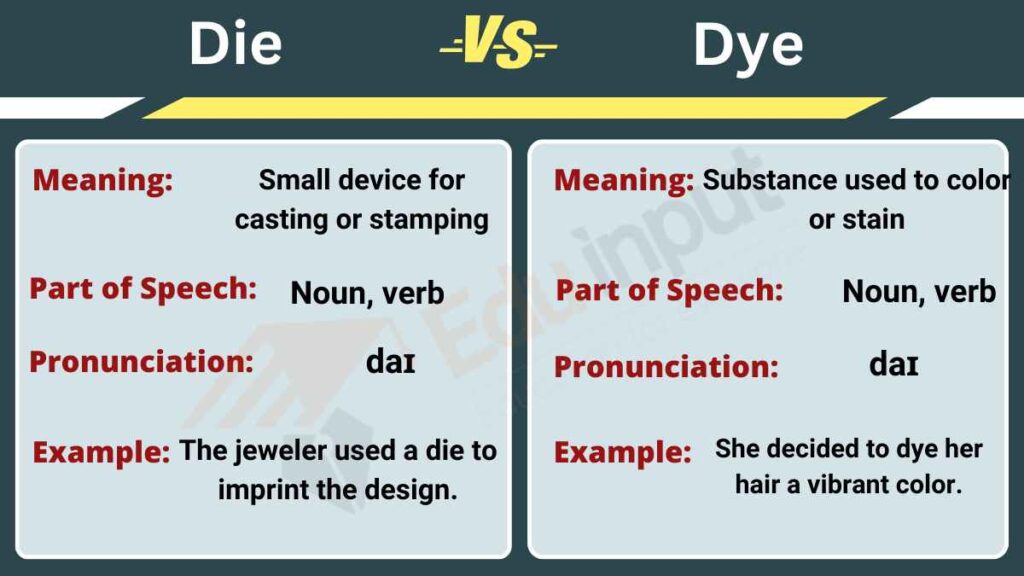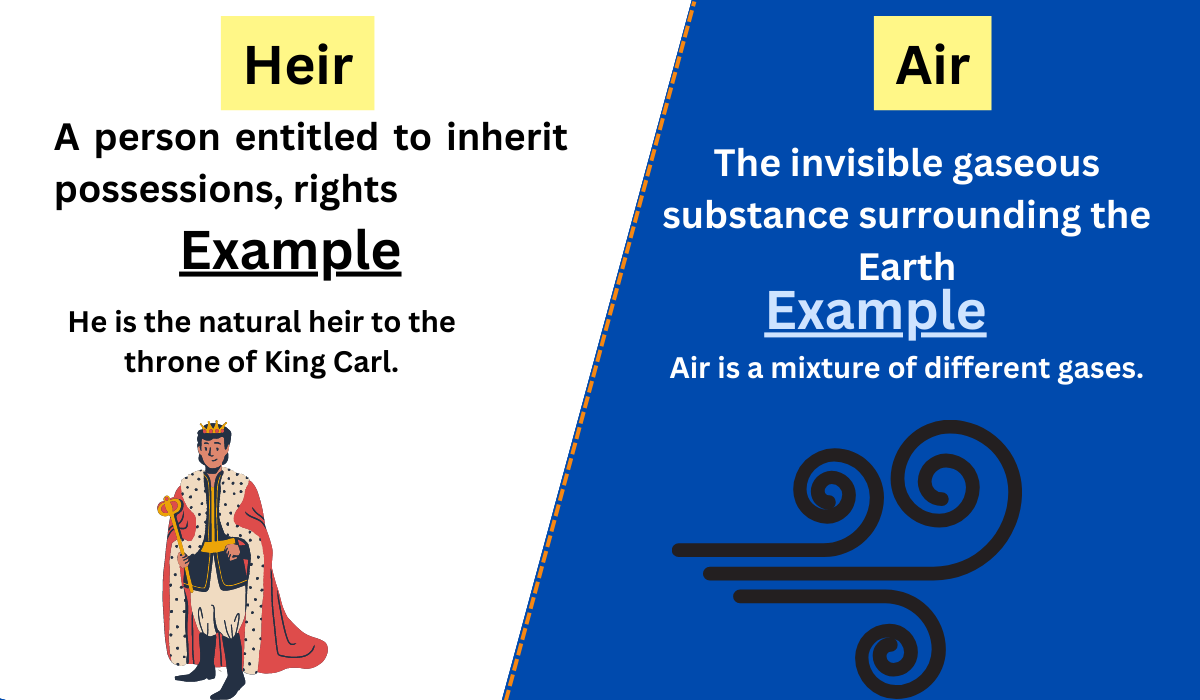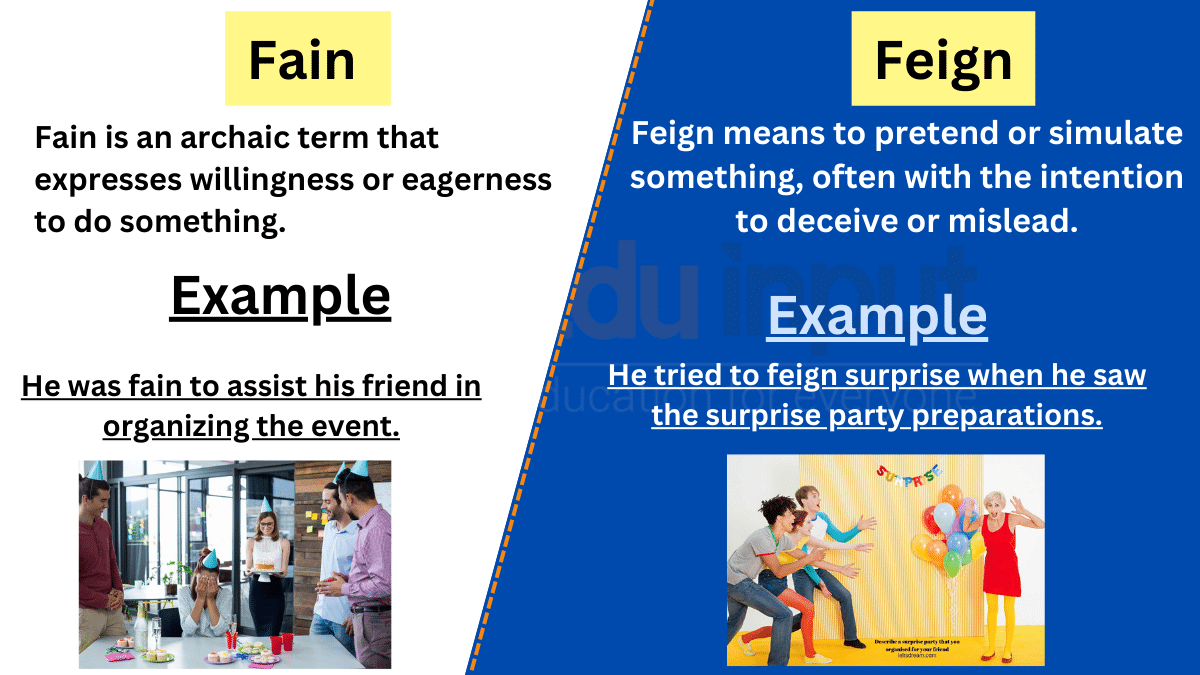Die vs. Dye – Differences Between And Examples
“Die” and “dye” are two words that may sound similar but have different meanings. “Die” is a verb that refers to the act of ceasing to live or the cessation of life. It can also refer to a small cube with numbered sides used in games of chance. On the other hand, “dye” is a noun or a verb that relates to coloring or tinting something. It typically refers to a substance used to change the color of fabric, hair, or other materials.
In the English language, there are words that may appear similar but have entirely different meanings. One such pair is “die” and “dye.” These words are often confused due to their similar spellings, leading to misunderstandings in written and spoken communication.

This article will explore the distinctions between “die” and “dye,” providing clear definitions, examples, and a comparative table. By gaining a comprehensive understanding of these words, we can avoid confusion and ensure accurate usage. Let’s delve into the specific meanings of “die” and “dye” to unravel their unique connotations.
Meanings and Examples
meanings and examples of die and dye are:
Die Meaning
The meaning of die as a noun is:
Noun: “Die” refers to a small, marked device used for casting or stamping a specific shape, symbol, or pattern onto a material, such as metal or plastic.
Die Examples As Noun
- The jeweler used a die to imprint the intricate design onto the gold pendant.
- The factory produced thousands of bolts using precision dies.
- The coin collector admired the detailed engravings on the minted die.
The meaning of die as a verb is:
Verb: “Die” also functions as a verb, indicating the act of ceasing to live or exist, often in reference to humans, animals, or living organisms.
Dye examples as verb
- The old oak tree finally died after years of decay.
- The patient’s health deteriorated, and he sadly died in his sleep.
- The flowers will die if not watered regularly.
Dye Meaning
The meaning of dye as a noun is:
Noun: “Dye” refers to a substance or pigment used to color or stain various materials, including fabric, hair, or other surfaces.
Dye Examples As Noun
- She used a red dye to transform her hair color.
- The artist mixed different dyes to create vibrant paintings.
- The textile industry utilizes various natural and synthetic dyes for fabric production.
The meaning of dye as a noun is:
Verb: “Dye” also serves as a verb, indicating the action of applying color or stain to something using a dye.
Dye Examples As Verb
- She decided to dye her white T-shirt pink for a fun, new look.
- The craftsman dyed the leather using a specialized dyeing technique.
- He carefully dyed the Easter eggs in different shades.
Difference Between Die And Dye
The grammatical differences between die and dye are:
| Die | Dye | |
| Noun | Small device for casting or stamping | Substance used to color or stain |
| Verb | Cease to live or exist | Apply color or stain to something |
| Example | The jeweler used a die to imprint the design. | She decided to dye her hair a vibrant color. |
Use of Die and Dye in Paragraph
I decided to dye my hair a vibrant shade of blue. As I applied the dye to my hair, I couldn’t help but wonder how the color would turn out. The anticipation was intense as I let the dye set in. After rinsing it out, I eagerly looked in the mirror to see the final result. The transformation was incredible! The new color made me feel like a different person. It was as if I had let a part of my old self die and embraced a bold, exciting change.
Understanding the distinctions between “die” and “dye” is crucial to avoid confusion. As a noun, “die” refers to a marked device used for casting or stamping shapes onto materials, while “dye” refers to a substance used for coloring or staining various materials.
When used as verbs, “die” signifies the act of ceasing to live or exist, while “dye” indicates the action of applying color or stain to something. By using these words accurately, we can convey our intended meanings and avoid miscommunication.
While “die” and “dye” may appear similar in spelling, they have distinct meanings and applications. “Die” refers to a marked device for casting or stamping shapes, or the act of ceasing to live or exist.
On the other hand, “dye” pertains to a substance used for coloring or staining or the action of applying color or stain to something. By recognizing the disparities between “die” and “dye,” we can communicate effectively and prevent misunderstandings. Let’s embrace the nuances of these words and ensure their correct usage in our language.






Leave a Reply